Fall for a waste-less semester at SAIT
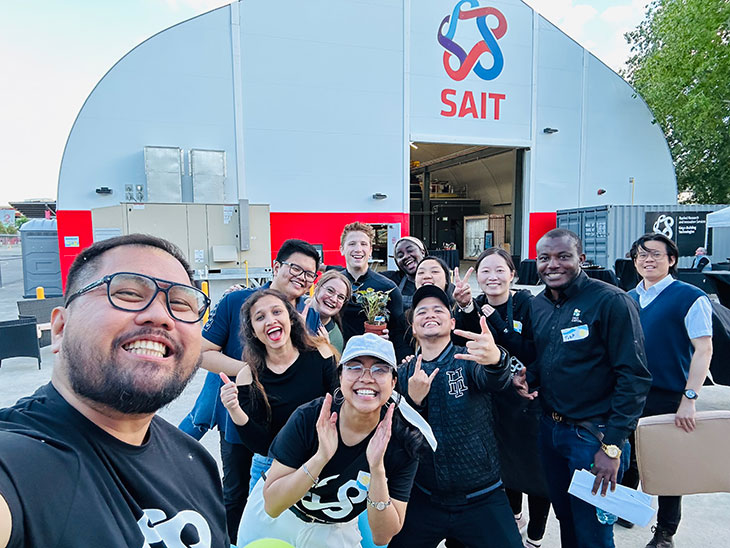
SAIT's Eco-Ambassador student volunteer group
Welcome and welcome back to campus. The leaves may be changing colour, but you can help keep our campus green with these tips from the Sustainability at SAIT team.
There’s a bin for that: Before you throw it out, sort it out
SAIT’s waste program includes streams for beverage containers, compost, mixed recycling and trash that correspond to sorting bins located across campus. What goes where?
- Check your to-go container — most empty food containers can go in mixed recycling (plastics #1-7) or compost (food-soiled cardboard or compostable plastic). Pizza for lunch? Leftover pizza and the empty box are both compostable.
- Put your plastic coffee cup lid in the trash. Put dry paper coffee cups in the mixed recycling and wet cups in the compost bin.
- Potato chip bags and most snack packaging/wrappers go in the trash bin.
- Beverage recycling bins are for refundable bottles. Money from beverage recycling in common areas is directed to a sustainability scholarship at SAIT.
- When in doubt, use the trash bin — a contaminated recycling bin goes to the landfill.
👉 DYK? Used clothing and household items can be donated to the Cerebral Palsy Society via the bins located on the main floor of both residence buildings on campus.
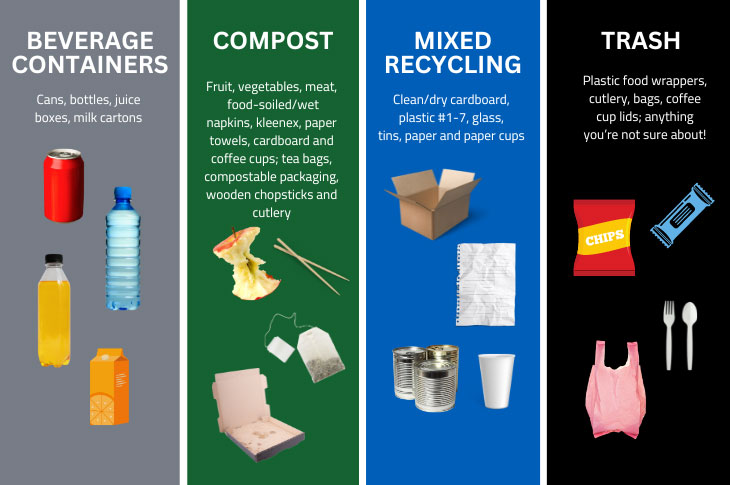
I’ll take a side of AI with my recycling
Meet OSCAR and give it a try — this sorting system uses AI to help you put your waste in the right place. OSCAR is located on the main floor of the Johnson-Cobbe Energy Centre. Don’t worry, OSCAR Sort only cares about waste — it doesn’t scan humans. OSCAR tracks waste metrics and doesn’t record other data.
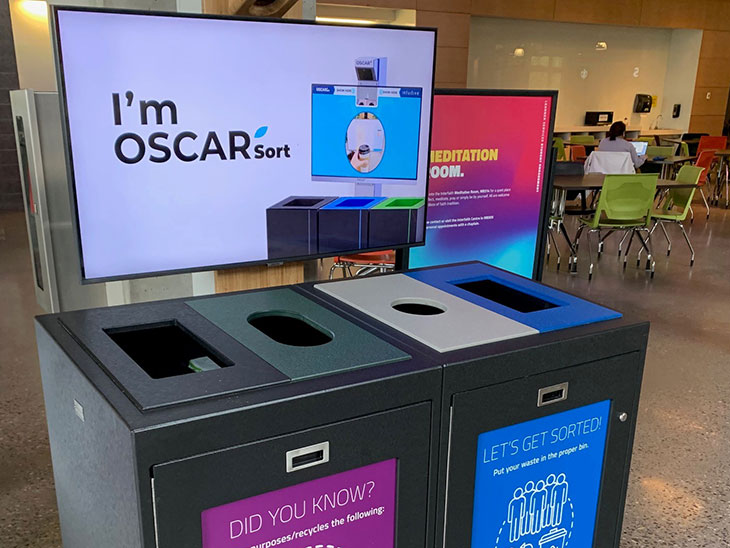
Earth-friendly eating
SAIT’s Begin Tower Dining Centre uses reusable food containers. Plus, you can opt for an Earthware reusable food container at the food court in Stan Grad Centre and Aldred Centre. Ask about Earthware at the counter.
Ditch your single-use coffee mug and save 10 cents when you purchase tea/coffee from The Odyssey Market, Tim Hortons, Starbucks and Second Cup.
Bring your reusable cutlery and straws when you visit campus food kiosks. Every little bit counts!
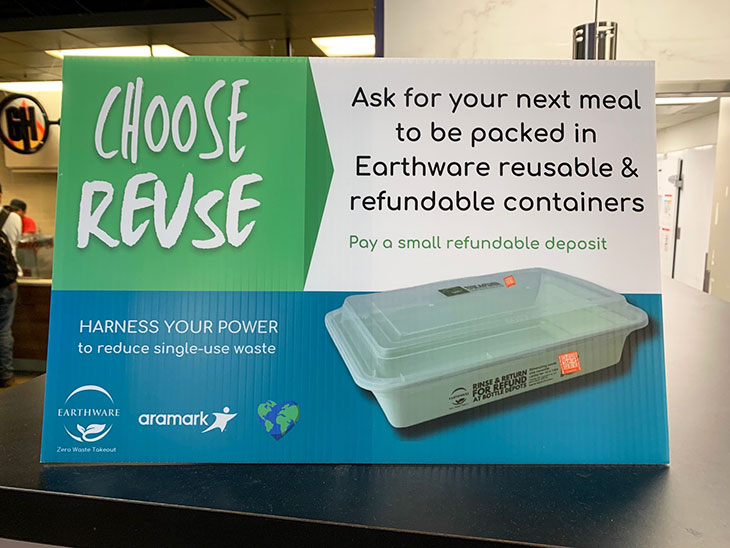
Get involved in sustainability on campus with the Eco-Ambassadors
The Eco-Ambassadors are a student volunteer group dedicated to supporting the growth of sustainability measures on SAIT campus. Being an Eco-Ambassador is all about making impactful change and creating a culture of sustainability #HereAtSAIT.
As an Eco-Ambassador, you’ll engage with the SAIT campus community to not only help others learn how SAIT is bolstering its sustainability initiatives, but how they can weave sustainability concepts into their careers, homes, conversations and everyday habits.
The Eco-Ambassadors are an inclusive and collaborative group of more than 200 students. Being an Eco-Ambassador is eligible for co-curricular recognition.
📅 Sustainability Lunch and Learn
Hear from the Eco-Ambassadors and learn more about the program and sustainability #HereAtSAIT
Wednesday, Sept. 25, 12:10 to 12:50 pm
Heritage Hall, AA128
Register to attend
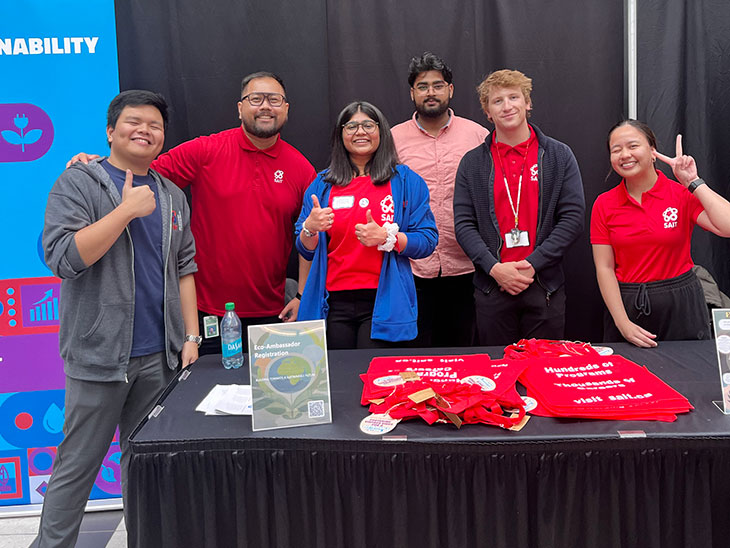
Sustainability at SAIT
SAIT is committed to sustainable development by fostering the interconnectedness of environmental, social, and economic dimensions of sustainability.
Learn more about sustainability at SAITCommitment to Excellence
We prepare students for successful careers and lives.
SAIT'S
2020-2025
Strategic plan

Oki, Âba wathtech, Danit'ada, Tawnshi, Hello.
SAIT is located on the traditional territories of the Niitsitapi (Blackfoot) and the people of Treaty 7 which includes the Siksika, the Piikani, the Kainai, the Tsuut’ina and the Îyârhe Nakoda of Bearspaw, Chiniki and Goodstoney.
We are situated in an area the Blackfoot tribes traditionally called Moh’kinsstis, where the Bow River meets the Elbow River. We now call it the city of Calgary, which is also home to the Métis Nation of Alberta.